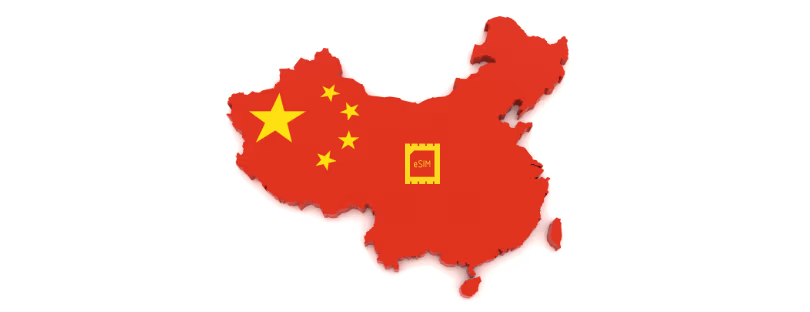
China Officially Embraces eSIM — A Game-Changer for 1.6 Billion Mobile Users
China’s long-awaited eSIM revolution is finally underway. After years of limited trials and device restrictions, the Ministry of Industry and Information Technology (MIIT) has officially approved nationwide eSIM mobile services for China Mobile, China Unicom, and China Telecom—opening the door for a new era of digital connectivity across the country’s 31 provinces and municipalities.
This marks a historic turning point for the world’s largest mobile market — and could have ripple effects far beyond China’s borders.
Huawei and Oppo Join the eSIM Race
In tandem with the carriers’ nationwide launch, China Telecom announced that domestic smartphone giants Huawei and Oppo will soon debut eSIM-enabled phones.
Huawei’s upcoming Mate 80 series, expected in October, will be the brand’s first flagship lineup to support full eSIM functionality. Meanwhile, Oppo plans to release its first eSIM models by the end of the year, signaling a broader shift among Chinese manufacturers toward “card-free” mobile ecosystems.
For consumers, that means no more physical SIM swaps — and far more freedom to switch networks or manage multiple profiles on a single device.
The Big Three Go Nationwide
All three of China’s telecom heavyweights launched their eSIM services within days of MIIT’s approval on October 14.
China Mobile was first to move, opening pre-registration for eSIM-enabled phones on October 13. The response was staggering: over 150,000 users signed up within just four hours. The company says its new eSIM ecosystem will cover phones, tablets, smartwatches, and even in-car connectivity—with users able to activate eSIMs at local service centers or locate participating outlets via the China Mobile app.
China Unicom, for its part, emphasized eSIM’s security, reliability, and flexibility, calling it the foundation for a “multi-device synchronized and globally seamless” experience. Unicom says it has already adapted 75 different devices—including smartphones, smartwatches, and tablets—for eSIM use, with millions of active users already connected.
China Telecom, the third major player, confirmed its commercial trial phase now extends to all 31 provinces and autonomous regions, though online sign-ups are not yet available. For now, customers must visit authorized outlets with compatible devices to activate the service.
What Makes eSIM Different
At its core, an eSIM (embedded SIM) replaces the traditional plastic SIM card with a digitally stored network profile, allowing users to connect to carriers without physically inserting a card.
The advantages go far beyond convenience:
- Device design freedom—removing the SIM tray frees internal space for larger batteries and better waterproofing.
- Carrier flexibility—users can switch networks with a tap instead of swapping cards.
- Global connectivity—ideal for travelers and IoT users who need multi-country coverage without multiple SIMs.
For China — where the mobile industry serves more than 1.6 billion active SIMs — this digital transformation could reshape how consumers interact with carriers, how devices are built, and how data plans are managed across multiple platforms.
The Apple Question: Will iPhone Join In?
The big wildcard in this rollout is Apple. The tech giant has been leading the eSIM shift globally — first removing physical SIM trays from iPhones in the U.S., and reportedly preparing to extend that design elsewhere.
According to Red Star News, Apple’s rumored “iPhone Air” could debut with a global eSIM-only design — a thinner, lighter phone with no SIM slot at all. However, Apple’s official China website still lists its eSIM-enabled model as “availability to be announced.”
That cautious stance may reflect Apple’s delicate balancing act in China’s highly regulated telecom environment—but the market pressure is clearly building.
Why This Matters: China’s Move Could Redefine the Global eSIM Market
China’s entry into large-scale eSIM adoption isn’t just another tech rollout — it’s a seismic shift for the global mobile industry.
Up to now, eSIM adoption has been strongest in Europe, Japan, South Korea, and the U.S., where Apple, Samsung, and Google have led the way. Yet regulatory restrictions and the dominance of traditional SIM distribution in China have slowed progress.
Now that MIIT has given the green light, China’s smartphone and telecom giants are likely to accelerate global eSIM development, driving faster integration into mid-range and budget devices — a segment where eSIM support has been limited so far.
If Huawei and Oppo push aggressively into eSIM-enabled models, they could reshape international adoption rates — especially across Asia, Africa, and emerging markets where their devices dominate.
This also raises competitive stakes for eSIM providers and platforms like Airalo, Airhub, Yesim, and Nomad, who have been catering to international travelers and IoT customers. As China scales eSIM infrastructure domestically, these global players could face both opportunities for partnerships and increased competition from Chinese operators entering the global eSIM marketplace.
A Controlled Revolution
While the move is groundbreaking, China’s eSIM rollout remains tightly managed. Users must still activate their profiles offline, a sign that the government is prioritizing security and regulatory control during the initial phase.
In the longer term, however, the integration of eSIM across devices — from smartphones to vehicles and wearables — positions China as a major player in the global connected ecosystem.
The shift mirrors global telecom trends toward frictionless connectivity, where devices automatically connect to the best network available. Yet China’s approach remains uniquely cautious—blending innovation with oversight and ensuring domestic giants like Huawei and Oppo lead the charge.
In short: China’s eSIM era has arrived, but it’s entering on its own terms—ambitious, regulated, and ready to redefine what “connected” means for more than a billion mobile users.












